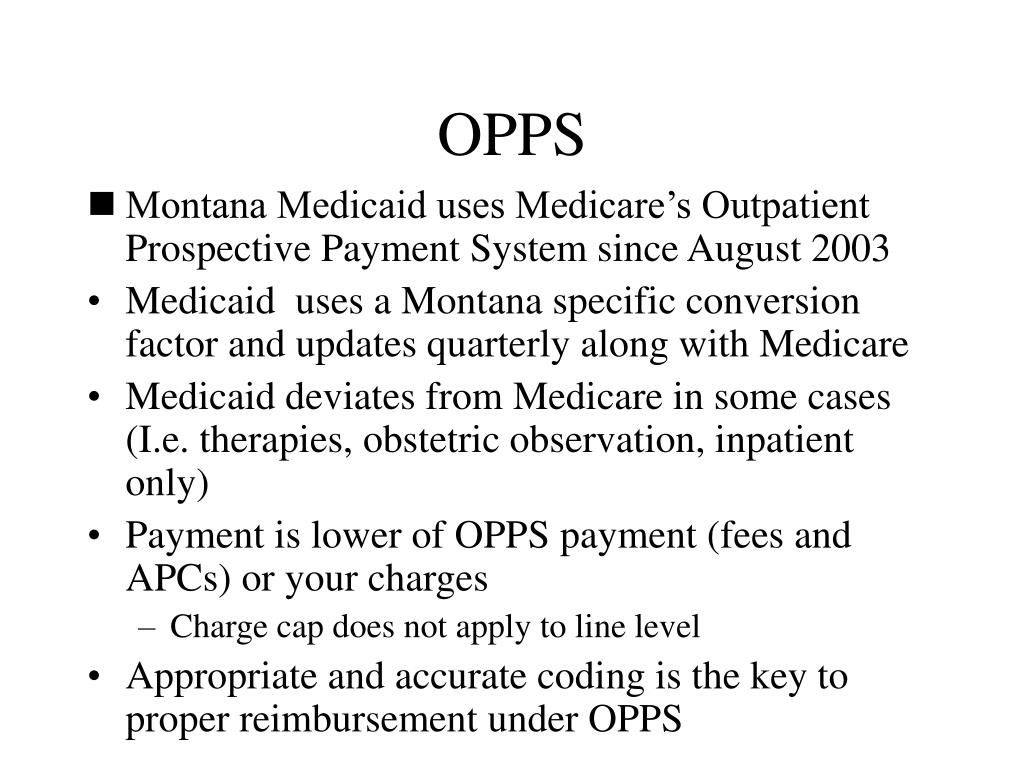Table of Content
This payment system aims to provide high-quality services without severe risks to current resources for both clients and medical organizations. Payers have a choice in determining how they pay to ensure that risks are shared fairly. Thus, a situation arises in which the payment system benefits extend to both payers and healthcare service providers.

We note that the overall impact of the -3.925% permanent behavioral assumption adjustment is -3.5%, as the permanent adjustment is only made to the 30-day payment rate and not the Low Utilization Payment Adjustment per visit payment rates. The statute requires CMS to determine annually the impact of differences between assumed behavior changes and actual behavior changes on estimated aggregate expenditures, beginning with CY 2020 and ending with CY 2026. CMS must also make temporary and permanent increases or decreases, as needed, to the 30-day payment amount to account for such increases or decreases. In the CY 2022 HH PPS proposed rule, CMS first solicited comments on a repricing methodology to determine the impact of behavior changes on estimated aggregate expenditures. This methodology predicts what the Medicare program would have spent under the pre-PDGM payment methodology, using actual CY 2020 and 2021 data and, thus, accounting for actual behavior changes as a result of the PDGM.
Home Health Prospective Payment System (HH PPS) Overview
CMS is ending the temporary suspension of OASIS data collection on non-Medicare/non-Medicaid HHA patients. HHAs will be required to submit all-payer OASIS data for purposes of the HH Quality Reporting Program beginning with the CY 2027 program year, with two quarters of data required for that program year. We are finalizing a phase-in period for January 1, 2025 through June 30, 2025, in which failure to submit the data will not result in a penalty.

Therefore, to solve financial and organizational problems arising at different stages, it is proposed to implement PPS. This system has already been able to prove its effectiveness for the activities of healthcare organizations. It has been conducted that PPS positively affects the quality of transplant services. The essence of a prospective payment system is that the amount of insurance compensation is based on a predetermined payment, regardless of the intensity of the rendered service.
About CMS
You can use them for inspiration, an insight into a particular topic, a handy source of reference, or even just as a template of a certain type of paper. The database is updated daily, so anyone can easily find a relevant essay example. This essay on Medicare Prospective Payment System of Billing of Transplant Services was written and submitted by your fellow student. You are free to use it for research and reference purposes in order to write your own paper; however, you must cite it accordingly. • added HHAs must report data using Outcome and Assessment Information Set and Home Health Consumer Assessment of Healthcare Providers and Systems . The license granted herein is expressly conditioned upon your acceptance of all terms and conditions contained in this agreement.

The OASIS places a patient into a diagnostic category, and the agency receives a payment for all of the services that the patient requires. The services are billed through the agency rather than the individual clinician who rendered the services. Current Procedural Terminology (CPT®) codes are not used for billing purposes under the HH PPS. However, they may be used to track services for administrative and productivity purposes. Each agency has its own criteria for tracking services and determining productivity, but these rules are separate from payment policy. In addition to the usual standard fees for transplant services provided, many healthcare organizations add the cost of additional fees.
Subscribe for Updates
Ask the patient and/or caregiver if they receive any health care services in their home. To ensure consolidated billing is implemented appropriately, beginning in 2022 home health agencies will need to complete a notice of admission within 5 days of admitting a patient to a home health episode or face a reduction in payment. The NOA replaces the request for anticipated payment which proved to be an ineffective method for ensuring home health agencies complied with their obligations under consolidated billing. In addition, CMS made additional adjustments to maintain budget neutrality between projections of what would have been spent under the former system and what has been spent under the PDGM.

Regardless of the type of payment system in place, it is critical that services provided are clearly documented and are reasonable, necessary, and individualized to the needs of each patient. The introduction of this payment system motivates employees of a medical organization to work together to increase their total income. Such a policy in the provision of organ transplant services can improve the quality of services provided. Patients requiring a transplant are among the clients who most need to be diagnosed as quickly as possible. It is precisely this quickness of diagnosis that the introduction of the analyzed payment system can provide.
The PDGM better aligns payments with patient care needs, especially for clinically complex beneficiaries that require more skilled nursing care rather than therapy. The statute requires CMS to make assumptions about behavior changes that could occur because of the implementation of the 30-day unit of payment and the PDGM. In the CY 2019 HH PPS final rule with comment period , CMS finalized three behavioral assumptions . On October 31, 2022, the Centers for Medicare & Medicaid Services issued the calendar year Home Health Prospective Payment System Rate Update final rule, which updates Medicare payment policies and rates for home health agencies . This rule includes routine updates to the Medicare Home Health PPS and the home infusion therapy services’ payment rates for CY 2023, in accordance with existing statutory and regulatory requirements. As described further below, CMS estimates that Medicare payments to HHAs in CY 2023 will increase in the aggregate by 0.7%, or $125 million compared to CY 2022.

It is possible that some patients may not be suitable for treatment by a student, regardless of the level of supervision. Additionally, some students may require a greater degree of supervision than their counterparts with more experience. Differentiate between the prospective payment systems for outpatient, home health, physician and non-physician practitioners, and ambulatory surgical settings. Thankfully, several members of congress have recognized the drastic impact these cuts will have on the industry and the patients in need of home health services. Pressure to pick up as many patients as possible so that the volume of individual patients compensates for the “financial loss” that the volume of visits no longer provides.
This payment system, which replaced the retrospective payment system, can positively affect the quality of transplant services. Of 1997, as amended by the Omnibus Consolidated and Emergency Supplemental Appropriations Act of 1999, called for the development and implementation of a prospective payment system for Medicare home health services. The BBA of 1997 put in place the interim payment system until the PPS could be implemented.

Effective October 1, 2000, the home health PPS replaced the IPS for all home health agencies . The PPS proposed rule was published on October 28, 1999, with a 60-day public comment period, and the final rule was published on July 3, 2000. This means that the agency must provide and bill for all Part A and Part B services provided to the patient. Consolidated billing is a mechanism established by CMS to prevent double billing for services. For example, if the agency does not have an SLP on staff, they must contract with an SLP to provide the necessary services.
The amount of the prepayment is made up of the results of the patient’s diagnosis and covers a particular time, such as, for example, the period of the patient’s stay in the clinic. CPT is provided "as is" without warranty of any kind, either expressed or implied, including but not limited to, the implied warranties of merchantability and fitness for a particular purpose. AMA warrants that due to the nature of CPT, it does not manipulate or process dates, therefore there is no Year 2000 issue with CPT. AMA disclaims responsibility for any errors in CPT that may arise as a result of CPT being used in conjunction with any software and/or hardware system that is not Year 2000 compliant. No fee schedules, basic unit, relative values or related listings are included in CPT.
CMS finalized policy changes regarding the use of services furnished via telecommunications systems in the CY 2021 HH PPS final rule. However, the collection of data on the use of telecommunications technology under the home health benefit is limited to a broad category of telecommunications technology costs under administrative costs on the HHA cost report . In the CY 2023 HH PPS proposed rule, CMS solicited comments on the collection of data on the use of such services furnished using telecommunications technology on the home health claims . CMS plans to begin collecting this data on home health claims on a voluntary basis beginning on January 1, 2023 and on a mandatory basis beginning on July 1, 2023. Further program instruction for reporting this information on home health claims will be issued in January, 2023. On January 1, 2020, CMS implemented the home health PDGM and a 30-day unit of payment as required by Section 1895 of the Social Security Act.



No comments:
Post a Comment